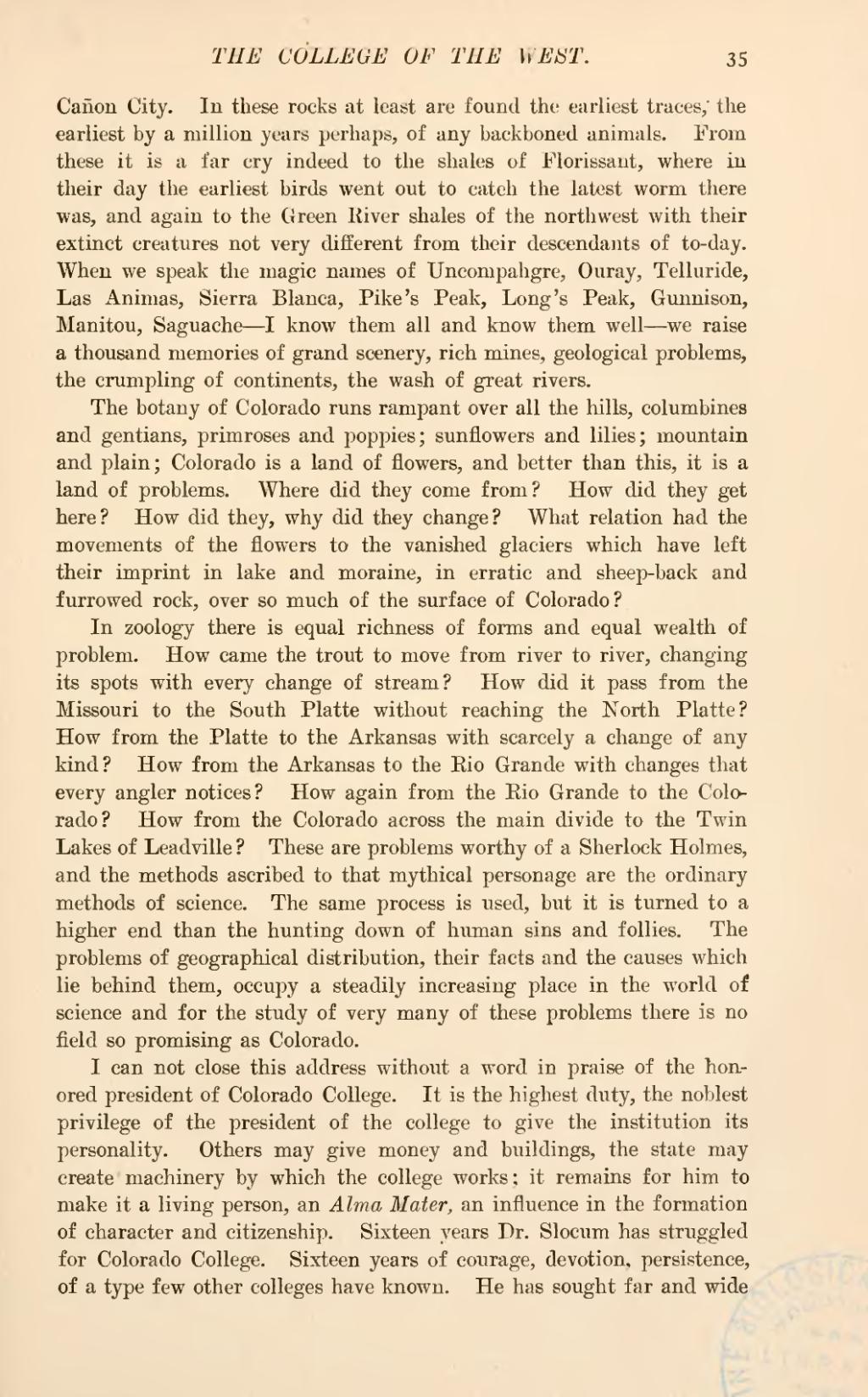Cañon City. In these rocks at least are found the earliest traces, the earliest by a million years perhaps, of any backboned animals. From these it is a far cry indeed to the shales of Florissant, where in their day the earliest birds went out to catch the latest worm there was, and again to the Green River shales of the northwest with their extinct creatures not very different from their descendants of to-day. When we speak the magic names of Uncompahgre, Ouray, Telluride, Las Animas, Sierra Blanca, Pike's Peak, Long's Peak, Gunnison, Manitou, Saguache—I know them all and know them well—we raise a thousand memories of grand scenery, rich mines, geological problems, the crumpling of continents, the wash of great rivers.
The botany of Colorado runs rampant over all the hills, columbines and gentians, primroses and poppies; sunflowers and lilies; mountain and plain; Colorado is a land of flowers, and better than this, it is a land of problems. Where did they come from? How did they get here? How did they, why did they change? What relation had the movements of the flowers to the vanished glaciers which have left their imprint in lake and moraine, in erratic and sheep-back and furrowed rock, over so much of the surface of Colorado?
In zoology there is equal richness of forms and equal wealth of problem. How came the trout to move from river to river, changing its spots with every change of stream? How did it pass from the Missouri to the South Platte without reaching the North Platte? How from the Platte to the Arkansas with scarcely a change of any kind? How from the Arkansas to the Rio Grande with changes that every angler notices? How again from the Rio Grande to the Colorado? How from the Colorado across the main divide to the Twin Lakes of Leadville? These are problems worthy of a Sherlock Holmes, and the methods ascribed to that mythical personage are the ordinary methods of science. The same process is used, but it is turned to a higher end than the hunting down of human sins and follies. The problems of geographical distribution, their facts and the causes which lie behind them, occupy a steadily increasing place in the world of science and for the study of very many of these problems there is no field so promising as Colorado.
I can not close this address without a word in praise of the honored president of Colorado College. It is the highest duty, the noblest privilege of the president of the college to give the institution its personality. Others may give money and buildings, the state may create machinery by which the college works; it remains for him to make it a living person, an Alma Mater, an influence in the formation of character and citizenship. Sixteen years Dr. Slocum has struggled for Colorado College. Sixteen years of courage, devotion, persistence, of a type few other colleges have known. He has sought far and wide
